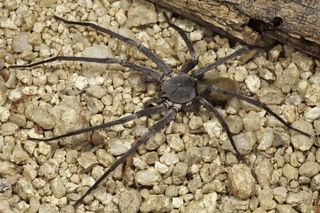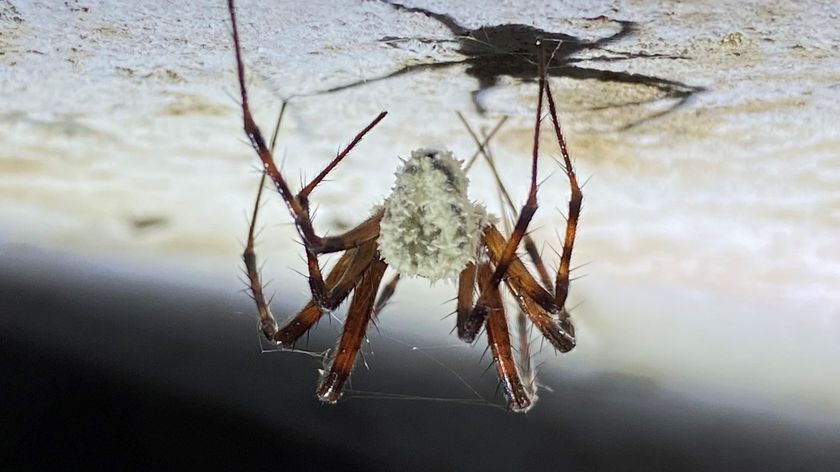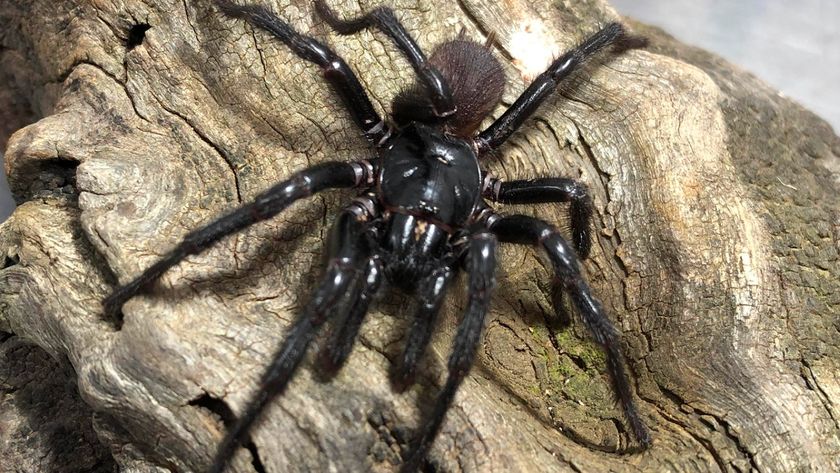Big, Furry Cave-Dwelling Spider with 'Red Fangs' Discovered
Scientists have discovered a new species of wandering spider that looks like it has two red fangs and lives mostly in grottos and old mines in Baja California Sur. The Sierra Cacachilas wandering spider (Califorctenus cacachilensis) is a relative of the aggressive and very venomous Brazilian wandering spider (Phoneutria fera). But though the new species, like most spiders, does have venom, it does not appear to be dangerous to humans. (A report in 2007 suggested the Brazilian wandering spider's venom can cause an uncomfortable, hours-long erection in men who are bitten.)
"I got bit while handling a live specimen of Califorctenus cacachilensis and I'm still alive," Jim Berrian, a field entomologist at the San Diego Natural History Museum and one of the spider's discoverers, said in a statement. [Goliath Birdeater: Images of a Colossal Spider]
Cave dwellers
The Sierra Cacachilas wandering spider is part of the Ctenidae family of spiders, which encompasses more than 500 species of spiders that hunt their prey by chasing them down. But very few of this group — a baker's dozen, before the latest discovery — are known from Mexico.
Berrian and some colleagues were doing fieldwork at Rancho Las Canvas in the Sierra de Las Cacachilas on the Baja peninsula in 2013 when they noticed a large exoskeleton that had been shed by a molting spider and was clinging to a rock overhang. The carapace had eyes arranged in three rows, with two on top, four in the middle and two on the bottom. That pattern is common throughout the Ctenidae family. The researchers knew that Ctenidae spiders are typically nocturnal, so they returned that night to the rock grotto where they found the exoskeleton to collect live specimens.

Berrian showed the spiders to Maria Luisa Jimenez, an expert on Baja California Sur spiders, who is a researcher at the Centro de Investigaciones Biológicas del Noroeste.
"In all my experience over the years collecting spiders on the peninsula, I had never seen a spider this large," Jimenez said in the statement. "I suspected that something new was waiting to be described."
Wandering spider
An analysis of the spiders' anatomy revealed the specimens to be a new species. More were later found in mine shafts scattered around Baja California Sur. The spiders are dark brown, with dirty yellow opistosomas (the most posterior section of the spiders' body). They have bulging brown mouthparts, or chelicerae, each of which features a small, red protuberance called a condyle at its base; the effect is as if the spider has two tiny crimson fangs. The spiders' total body length can reach up to an inch (27 millimeters), and their spindly legs can be nearly twice that.
Sign up for the Live Science daily newsletter now
Get the world’s most fascinating discoveries delivered straight to your inbox.
The new spider is closely related to two other genera of Ctenidae spiders, Thoriosa and Trogloctenus, the researchers reported March 2 in the journal Zootaxa. All look similar, and Trogloctenus is another cave-dweller ("trog" comes from the Greek for "hole").
Despite its menacing look, and notorious relatives, the new wandering spider isn't especially dangerous, the researchers said.
"We haven't analyzed the toxicity of the venom," Berrian said, "but most wandering spiders are not as dangerous as the Brazilian wandering spider."
Original article on Live Science.

Stephanie Pappas is a contributing writer for Live Science, covering topics ranging from geoscience to archaeology to the human brain and behavior. She was previously a senior writer for Live Science but is now a freelancer based in Denver, Colorado, and regularly contributes to Scientific American and The Monitor, the monthly magazine of the American Psychological Association. Stephanie received a bachelor's degree in psychology from the University of South Carolina and a graduate certificate in science communication from the University of California, Santa Cruz.











